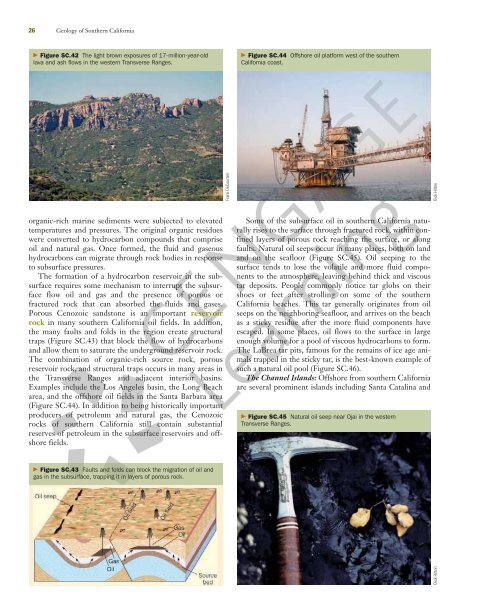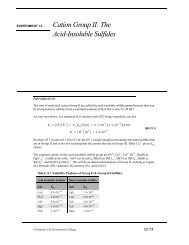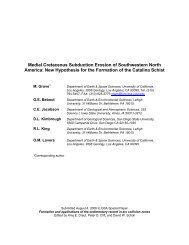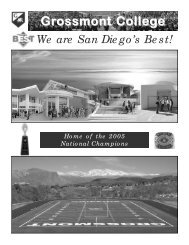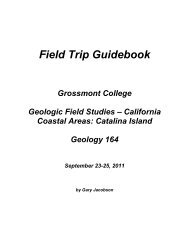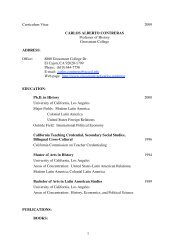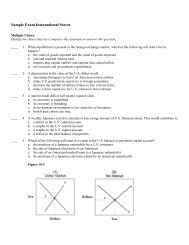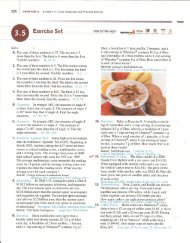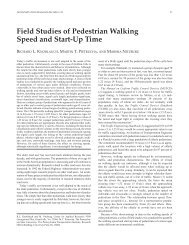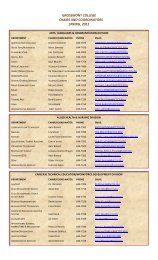Geology of Southern California.pdf - Grossmont College
Geology of Southern California.pdf - Grossmont College
Geology of Southern California.pdf - Grossmont College
Create successful ePaper yourself
Turn your PDF publications into a flip-book with our unique Google optimized e-Paper software.
26 <strong>Geology</strong> <strong>of</strong> <strong>Southern</strong> <strong>California</strong><br />
� Figure SC.42 The light brown exposures <strong>of</strong> 17-million-year-old<br />
lava and ash flows in the western Transverse Ranges.<br />
organic-rich marine sediments were subjected to elevated<br />
temperatures and pressures. The original organic residues<br />
were converted to hydrocarbon compounds that comprise<br />
oil and natural gas. Once formed, the fluid and gaseous<br />
hydrocarbons can migrate through rock bodies in response<br />
to subsurface pressures.<br />
The formation <strong>of</strong> a hydrocarbon reservoir in the subsurface<br />
requires some mechanism to interrupt the subsurface<br />
flow oil and gas and the presence <strong>of</strong> porous or<br />
fractured rock that can absorbed the fluids and gases.<br />
Porous Cenozoic sandstone is an important reservoir<br />
rock in many southern <strong>California</strong> oil fields. In addition,<br />
the many faults and folds in the region create structural<br />
traps (Figure SC.43) that block the flow <strong>of</strong> hydrocarbons<br />
and allow them to saturate the underground reservoir rock.<br />
The combination <strong>of</strong> organic-rich source rock, porous<br />
reservoir rock, and structural traps occurs in many areas in<br />
the Transverse Ranges and adjacent interior basins.<br />
Examples include the Los Angeles basin, the Long Beach<br />
area, and the <strong>of</strong>fshore oil fields in the Santa Barbara area<br />
(Figure SC.44). In addition to being historically important<br />
producers <strong>of</strong> petroleum and natural gas, the Cenozoic<br />
rocks <strong>of</strong> southern <strong>California</strong> still contain substantial<br />
reserves <strong>of</strong> petroleum in the subsurface reservoirs and <strong>of</strong>fshore<br />
fields.<br />
� Figure SC.43 Faults and folds can block the migration <strong>of</strong> oil and<br />
gas in the subsurface, trapping it in layers <strong>of</strong> porous rock.<br />
Frank DeCourten<br />
� Figure SC.44 Offshore oil platform west <strong>of</strong> the southern<br />
<strong>California</strong> coast.<br />
Some <strong>of</strong> the subsurface oil in southern <strong>California</strong> naturally<br />
rises to the surface through fractured rock, within confined<br />
layers <strong>of</strong> porous rock reaching the surface, or along<br />
faults. Natural oil seeps occur in many places, both on land<br />
and on the seafloor (Figure SC.45). Oil seeping to the<br />
surface tends to lose the volatile and more fluid components<br />
to the atmosphere, leaving behind thick and viscous<br />
tar deposits. People commonly notice tar globs on their<br />
shoes or feet after strolling on some <strong>of</strong> the southern<br />
<strong>California</strong> beaches. This tar generally originates from oil<br />
seeps on the neighboring seafloor, and arrives on the beach<br />
as a sticky residue after the more fluid components have<br />
escaped. In some places, oil flows to the surface in large<br />
enough volume for a pool <strong>of</strong> viscous hydrocarbons to form.<br />
The LaBrea tar pits, famous for the remains <strong>of</strong> ice age animals<br />
trapped in the sticky tar, is the best-known example <strong>of</strong><br />
such a natural oil pool (Figure SC.46).<br />
The Channel Islands: Offshore from southern <strong>California</strong><br />
are several prominent islands including Santa Catalina and<br />
� Figure SC.45 Natural oil seep near Ojai in the western<br />
Transverse Ranges.<br />
Dick Hilton<br />
Dick Hilton


